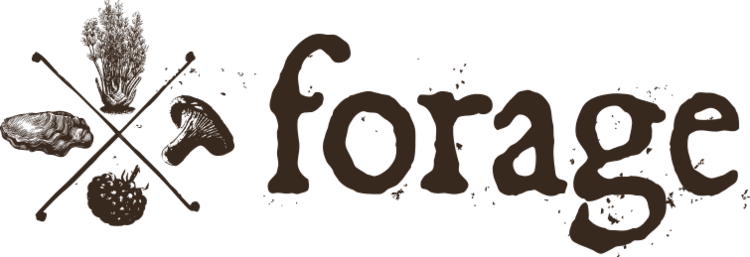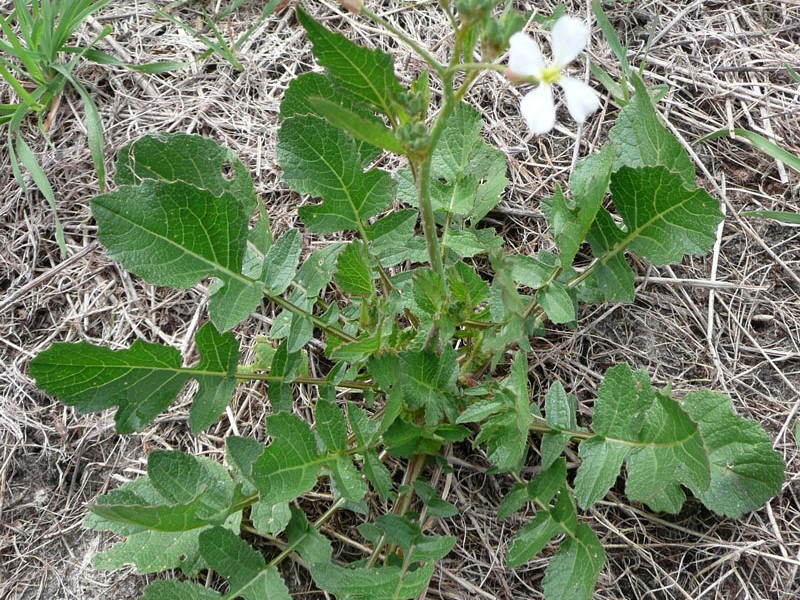Wild Radish: A spicy and abundant wild edible you need to know!
Todays guest post is from my all time favorite favorite foraging book, The Flavors of Home. This amazing book, written by Margit-Roos Collins, is my go to on foraging for wild edibles in The Bay, and I highly recommend it to anyone who wants to learn about what nature has to offer in our area (I like it so much I even wrote the forward for the new edition!). Check out her post below and make sure to click the link at the bottom to get a copy of your own.
Happy foraging!
Iso Rabins
Founder: forageSF
Wild Radish (Raphanus sativas)
Common or Field Mustard (Brassica campestris)
Charlock (B. kaber, also B. arvensis)
Mediterranean or Summer Mustard (B. geniculata)
Black Mustard (B. nigra)
I have nothing but affection for these members of the Mustard family. Foraging for them is pure pleasure. Few paths are more inviting than those which lead through waist-high fields of blooming mustard or radish. When I am introducing friends to edible wild plants, these two are frequently the ones with which we begin. Even if they never eat another wild mouthful in their lives, they remember their first bites fondly.
Radish and all the local mustards belong to the Mustard family or Cruciferae. The family contains an unusually wide variety of edible, cultivated species: broccoli, Brussels sprouts, cabbage, cauliflower, horseradish, kohlrabi, rutabaga, and turnips among them. The radish species that grows wild here is the same species as the domesticated radish which is just bred to have a larger root. It was eaten in Egypt even before the pyramids were built and has been raised in China and Japan for at least as long. Most of our wild mustards are also grown as crops for their seeds or leaves. The Latin name, Cruciferae, comes from the shape of the blossoms: four petals arranged like a cross or crucifix.
The blossoms are my favorite part. Though the skies are cool with rain and deciduous trees are still bare, mustard is in its fullest bloom in March, coloring vast fields and orchards pure yellow. Our blooming season begins subtly, with scattered harbingers like the snowy plums, but mustards announce the season's arrival to whole valleys at a time.
There's a story about the introduction of mustard to California that botany writers keep passing on without being able to confirm it. It is fact that the mustards and radish are native to Europe. And we know that black mustard arrived in California sometime during the Spanish Mission period between 1769 and 1824, because its seeds have been found in adobe building bricks from that period. It is legend that the Spanish padres spread black mustard between the southern missions and San Francisco to keep themselves from getting lost. The idea is that they dropped seeds along the way as they explored northward, counting on the seeds to produce a trail of yellow flowers that they could follow home in the spring. At least one respected botanist disputes this tale, saying that the padres simply followed well-worn Indian trails. But I think writers will keep passing the story on as long as possible, because we love so much to imagine it.
Field mustard, radish, and charlock were here by the time the '49ers arrived, so that wave of eastern migrants never knew a California without its fields of yellow in March. Summer mustard came much later than the others and wasn't observed in the Bay Area until 1915.
Radish blossoms also appear in March, with a pastel prettiness that lasts into the summer. Each plant produces flowers that are predominantly white, pink, purple, or occasionally, yellow. The colors are all mixed together in thickly blooming, sweet-smelling patches. Try sitting a while in such a radish patch, head deep in flowers, on a warm April day. Give yourself up to that pastel ocean until it seems utterly natural to be there. If part of you is Ferdinand the bull, this is your chance to wallow in flowers until you are buzzy and light headed with contentment. My Ferdinand self has been happier in radish patches than anywhere else I have been.
Much of the fun in all this flower appreciation comes from eating the blossoms and privately savoring their down-to-earth, unflowery flavors. Mustard buds and blossoms taste just like raw broccoli heads. And those sweetly pink radish flowers have a decidedly radishy bite that warms the mouth and makes them doubly irresistible. Try sprinkling a handful on a vegetable dip. What a joy it is each time we find something (or someone) with a combination of positive traits that cuts across the usual expectations. Radish blossoms have that refreshing quality, with a look and fragrance that's ultrafeminine and a taste that's salt of the earth.
The plump, wild radish seedpods are good raw in salads, to be consumed by true radish lovers; they pack enough of a punch that I wouldn't recommend them except to people who voluntarily eat cultivated radishes. Mustard seedpods are long and thin and lined with the proverbially tiny seeds. Black mustard seeds are the ones traditionally used for mustard, though the others can be substituted. The Romans crushed and mixed them with a little new wine as a condiment; later cultures used vinegar as the binder.
When fully ripe, the seedpods split open. If you want to make mustard from the wild seeds, you need to gather the pods just before they split. I have not done this, but the recommended way is to gather the still closed, upper pods from plants whose lower pods have already opened.
Dry the pods on a clean surface for several days, then flail them to break them open and release the seeds. The dry seeds can be ground in a blender to make powdered mustard. Mixing 1/4 cup of the powder with 2 or 3 tablespoons of water, vinegar, or beer will produce a very hot, Chinese-style mustard sauce. To make the milder American style, follow the recipe in any basic cookbook, such as Joy of Cooking.
Radish and mustard leaves are among the first greens to appear after the rains begin. Along with miner's lettuce, dock, and chickweed, they are my favorite wild greens -- abundant, tender, tasty, and easy to harvest. It is likely that the mustard varieties vary somewhat in their flavor, but I haven't paid attention to which ones I was eating so can only tell you that all the mustard greens I have tried have tasted at least okay and usually quite good. One book mentions that charlock leaves are particularly tasty, but that's the least common mustard in this area. I generally prefer radish to mustard greens, so if you don't like mustard greens be sure to give radish leaves a chance to please you.
By November (October in rainy years), you can go to mustard and radish areas and find a thick covering of healthy new leaves, about a foot high. The young leaves can feel rough, almost prickly, but that quality disappears with even brief cooking.
Both types of leaves are large and irregularly lobed. The flavor is better in winter, before the plants flower, although I have eaten and enjoyed them after flowering began. Raw, the leaves are slightly peppery and can be good in salads if they are chopped coarsely. Steamed until tender, they become milder in flavor. Radish leaves lose their radish taste completely. Mustard greens keep a trace of bitterness but it is not objectionable. Both greens taste best with a squeeze of lemon or a splash of vinegar.
I like to make a simple, crustless quiche with these leaves. It is good hot or cold, and makes a fine light meal or picnic food. You can use wild radish and mustard leaves in any of the ways you would use the stronger-tasting grocery-store greens such as cultivated mustard or kale. Like their domesticated peers, they are loaded with Vitamin A.
Radish or Mustard Pie
• 1 onion
• 4 to 6 cups radish or mustard leaves
• 1 cup grated sharp cheddar
• 1 cup grated mozzarella
• 2 eggs
• nutmeg, salt, pepper, and Worcestershire sauce
Chop the onion and saute it in a little oil until tender. Rinse the radish or mustard leaves (or a combination of the two) and chop coarsely.
Add the leaves to the onion and stir them over low to medium heat until the leaves have wilted. Whisk the eggs until lightly beaten.
Then, in a 9-inch pie pan, cake pan, or ovenproof frying pan, combine the onions and greens, the grated cheeses, and the eggs. Add nutmeg, salt, pepper, and Worcestershire sauce, all to taste. A thin layer of grated cheddar sprinkled over the surface gives the pie an especially pleasing color.
Bake the pie at 375° F. for about 30 minutes or until the top begins to brown. Slice it and eat.
Where and When to Find Them
Finding mustard in bloom is no problem in any Bay Area county, for it is common to abundant and widespread throughout the area in disturbed or cultivated ground. The great displays tend to be in agricultural areas, although not always. At Ft. Cronkhite in Marin County, the hidden oceanside vale (toward San Francisco from the main valley) is solid yellow in March. The farming region of Brentwood and Byron in the East Bay is good, but my favorite mustard displays are those along Route 1, near Half Moon Bay. The vast, bright fields are framed between the Coast Range and the Pacific in what must surely be one of the most beautiful agricultural settings in America.
The spring-blooming mustard species that colors these vast areas, common mustard, begins flowering in February and is at full strength in March. Black mustard does most of its blooming between March and May. Summer mustard flowers primarily in the summer (did you guess?), although you will see it along trails and roads and in vacant places from spring through early fall.
Radish is common to abundant in Marin and on the Peninsula. In the East Bay, you will find more of it between the shore and the first row of hills than further inland. One beautiful radish patch is at the end of Pierce Point Road on the Point Reyes peninsula. It has enough of the flowers to sweeten the air. Other fine radish displays probably grow within a few miles of you, wherever you live in the Bay Area.
Radish blooms from March through October, depending on the location, but in most areas, April and May are its peak months. The Pierce Point Road patch is at its best in May and turns brown by June, but nearby, radishes bloom all along the path to the beach much later in the summer.
The seedpods of both species appear soon after the plants begin to flower and continue to be available for months. The leaves are at their best from October or November until the end of February, and are most abundant in January and February.


